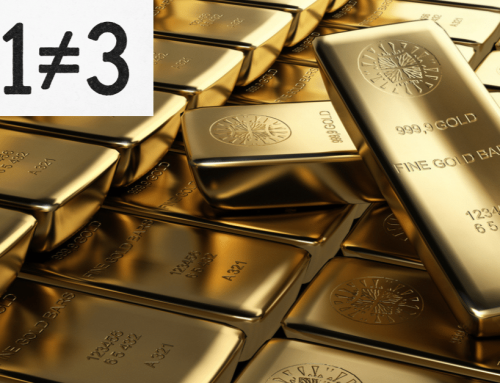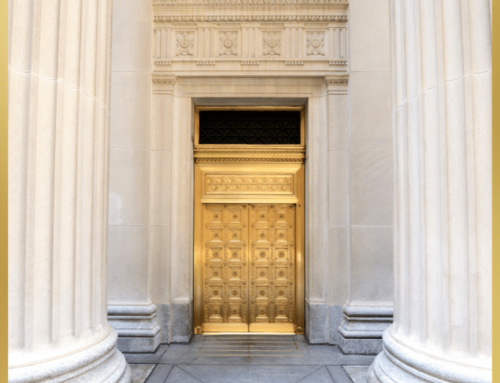From 1971 to Today: Why Gold Remains the Ultimate Financial Anchor
“To know where we’re going, we must understand where we’ve been.”
In 1971, a pivotal moment reshaped the global financial landscape: President Richard Nixon’s decision to end the U.S. dollar’s convertibility to gold. This act, often referred to as “closing the gold window,” marked the transition from a gold-backed monetary system to the fiat currency system we use today. While this change addressed immediate economic pressures, its long-term effects continue to shape global markets.
What Happened in 1971?
Before 1971, the U.S. dollar was tied to gold under the Bretton Woods Agreement, providing stability by anchoring currencies to a tangible asset. Central banks could exchange dollars for gold at a fixed rate of $35 per ounce. However, as the U.S. increased spending on domestic programs and the Vietnam War, it printed more dollars than its gold reserves could support.
Faced with mounting pressure and a run on U.S. gold reserves, Nixon decoupled the dollar from gold, transforming it into a fiat currency. This move allowed the U.S. to print money without gold-backed constraints but introduced new vulnerabilities.
The Long-Term Impact
The removal of gold’s backing from the dollar unleashed an era of unrestrained currency creation. While this newfound flexibility enabled governments to respond to economic crises and foster growth, it also led to significant inflationary pressures and a devaluation of purchasing power.
Over time, this shift contributed to ballooning debt levels. In 1971, U.S. national debt stood at $398 billion; today, it exceeds $35 trillion—over 120% of GDP—a nearly 90-fold increase. The detachment from gold also introduced greater volatility in exchange rates, complicating global trade and investment decisions.
Despite these challenges, gold found a renewed purpose as a safe-haven asset. Its price, no longer fixed, began to reflect market dynamics and investor sentiment. In 1971, gold was priced at $35 per ounce. In 2024, it exceeded $2,750 per ounce, demonstrating an annualized growth rate of approximately 8%.
Why This Matters Today
The financial world of 2024 bears the weight of these decisions. Central banks now operate in a system of endless currency creation, fueling inflationary pressures and diminishing purchasing power. Meanwhile, investors face the challenge of preserving wealth as traditional assets falter.
Gold offers a counterbalance:
- It’s finite and tangible, immune to the risks of fiat currencies.
- It has grown consistently over the decades, averaging an 8% annualized increase since 1971.
- It provides stability and security in an increasingly uncertain world.
Gold’s enduring value as a store of wealth has stood the test of time, making it an essential component of financial resilience.
Addressing Alternatives
Some argue that fiat systems provide necessary flexibility for modern economies. While this flexibility allows governments to respond to crises, it often comes at the cost of long-term stability. Gold, on the other hand, provides certainty in an uncertain world.
Looking Ahead
The decisions made in 1971 reshaped a financial system that continues to impact us today. Understanding these origins is key to protecting your wealth in the modern era. As inflation rises and global uncertainty deepens, gold’s relevance becomes even clearer. It is not merely a relic of history but a cornerstone of sound financial planning.
Takeaway
Gold is not just a relic of the past; it is a foundation for financial security in an unpredictable world. Whether you’re looking to preserve wealth or hedge against economic instability, gold remains a timeless solution.
As history has shown, financial systems can change overnight, and the value of fiat currency is only as strong as the confidence behind it. Gold, however, is unchanging—it has served as a reliable store of wealth for thousands of years. In a world of growing debt, inflationary pressures, and economic uncertainty, physical gold offers stability, security, and peace of mind.
Imagine holding an asset that stands firm while markets crumble, that doesn’t depend on the promises of governments or institutions. Gold is that asset—a cornerstone of financial resilience and a safeguard for your future. If you’re serious about protecting and growing your wealth, it’s time to make physical gold a key part of your financial portfolio.
What do you think? Do you see gold as a vital part of your financial strategy? Share your thoughts below!
Disclaimer
This article is for informational purposes only and should not be considered financial advice. Consult with a financial professional to determine the best strategy for your individual circumstances.






